Population – Laos is currently ranked as the 105th most populous country in the world, as it moved up by one place following the year 2017. According to the World Bank, the population of Laos in 2020 stood at a mere 7.38 million people. The population growth rate for Laos remains stable at around 1.5% over the last 10 years. In terms of its labor force participation rate the country has a huge demographic advantage, as the rate in 2019 stood at about 41%. This has been more or less constant over the last 10 years. Although a significant hurdle is the rate of urbanization, which stands at a mere 36.3%.
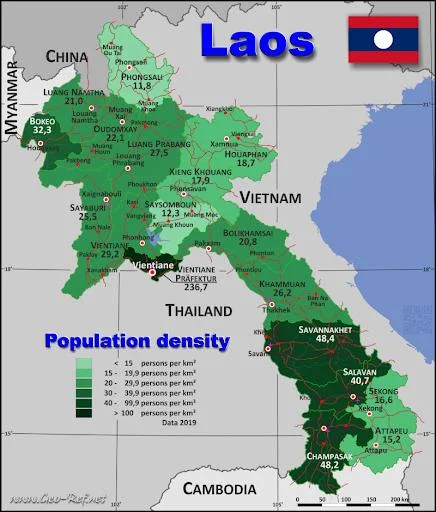

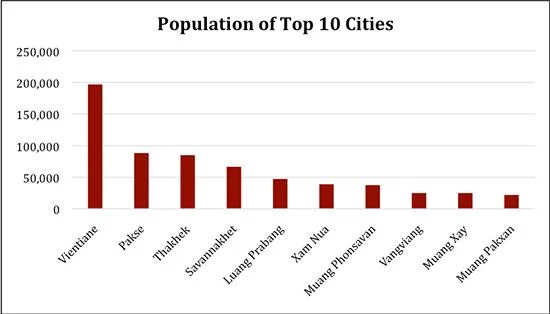
Religious and ethnic diversity –The predominant religion of Laos is Theravada Buddhism. Buddhism was the state religion of the pre-republic kingdom of Laos. The Lao Theung and Lao Soung groups, follow non-Buddhist local religions. Buddhism and local religion are not necessarily mutually exclusive, however; there is both a syncretic practice of and a general tolerance for local religious traditions within the broader Buddhist community. Some of the upland people, especially those who have migrated from southern China, mix Confucian ideas with Buddhism and local religions. Other smaller religious communities include Christians, Muslims, and followers of other faiths. As per the 2015 National Census, 65% of the population are Buddhists, 31% have no religion, 2% are Christian and 2% are of other religions.

Laos is an ethnically and linguistically diverse country. The official language of Laos is Lao, although various foreign languages have often been used by the elite. People in Laos are officially grouped primarily by language and location into one of three categories: Lao Loum (Lowland Lao), Lao Theung (Lao of the Mountain Slopes), and Lao Soung (Lao of the Mountain Tops). The Lao Loum generally live on the banks of the Mekong and its tributaries and in the cities. All speak Tai languages of the Tai-Kadai family. The Lao Loum constitutes roughly two-thirds of the population, with the ethnic Lao by far the largest component. The Lao Theung peoples are scattered throughout Laos and speak Austro-asiatic languages and constitute about one-fourth of the population. The Lao Soung group includes peoples who have migrated into northern Laos and speak Hmong-Mien or Tibeto-Burman languages, and constitute about one-tenths of the population.
Age – As per 2017 estimates, 53% of the population of Laos lie in the age category between of 0-24, about 37% lie in the age category of 25-54, and the residual 10% lie in the ages above 55. This gives Laos a problem similar to other Asian countries, which is that of an ageing population. The country also lacks comprehensive legislation and data on ageing and older persons health conditions, poverty, etc.
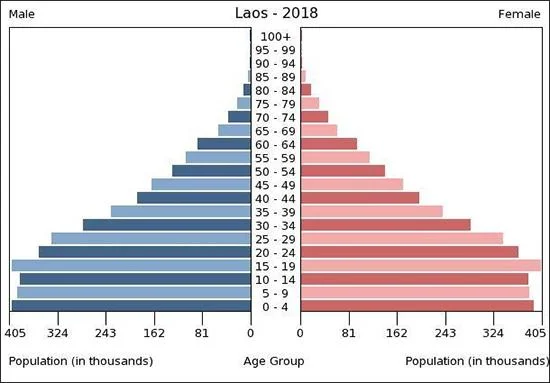
Literacy Rate (% of people ages 15 and above) – 85%
Unemployment Rate- A major advantage enjoyed by Laos is the unemployment rate, which has been consistently under 0.75% for the last 10 years according to the World Bank. In the year 2019, the Unemployment Rate stood at mere 0.6%.
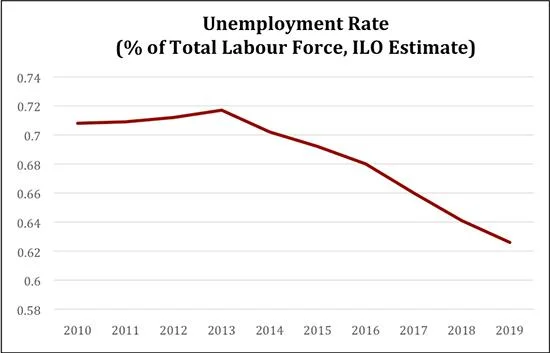
Quality of Infrastructure Ranking – According to the World Bank the following are the rankings of Laos in terms of quality of infrastructure in comparison with other ASEAN countries:
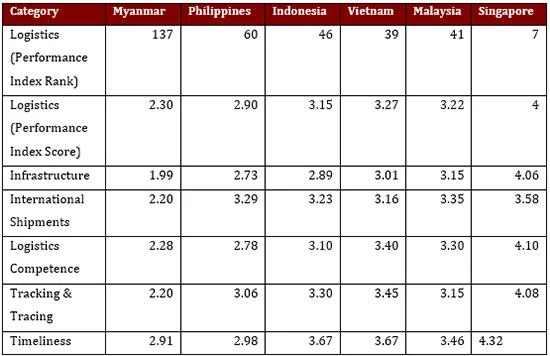
Logistics suffer as road infrastructure in Laos is limited, underdeveloped and particularly vulnerable to extreme weather conditions. According to the World Bank, 50 percent of the roads observed were in fair or good condition and only 56 percent of the rural population in Laos has access to an all-season road. In 2017, The World Bank and Laos Ministry of Finance signed an agreement to dedicate $25 million to the Second Road Sector Project in Laos, which is mainly designed to create climate-resistant road infrastructure and to improve road connectivity in parts of Laos that are susceptible to natural disasters.
The Japanese provided assistance in building a new international airport in Vientiane, and the Thais assisted with a new airport in Luang Prabang. The country’s weak road infrastructure adversely affects the development of its rich natural resources, such as minerals and wood products. In order to improve the road infrastructure, the Chinese also started of the BRI.
The only rail infrastructure currently in use in Laos is a 3.5 km extension from Thailand, running from Nongkhai across the Friendship Bridge to Thanaleng Railway Station, 20 km east of Vientiane. In 2015, the Lao government stated that at least 70 projects were planned or underway, with a total generation potential of 26,000 MW. As of 2014, 72% of the population had access to an improved water supply source, compared to 45 percent in 2000. For more specific details refer to:
https://laos.opendevelopmentmekong.net/topics/infrastructure
Stay up to update with our latest news.
Have Us Contact You

© Copyright ASEAN Business Partners 2025 I Sitemap I Privacy Policy